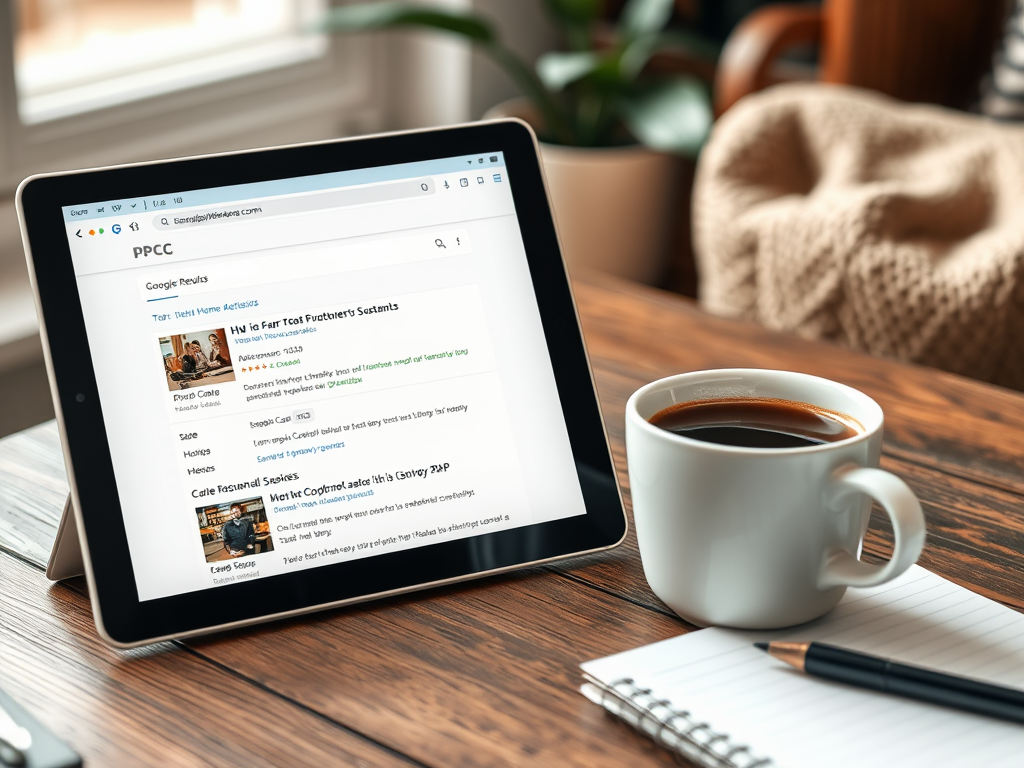In a world dominated by digital interactions, establishing a recognizable brand presence is more crucial than ever. As businesses strive to capture the attention of their audience, they must navigate the myriad of advertising options available. One of the most potent tools at their disposal is Pay-Per-Click (PPC) advertising, effectively transforming brand awareness into a tangible goal. By leveraging PPC, companies can not only promote their products but also cultivate a robust brand identity. This article delves into strategies designed to optimize PPC campaigns for increased brand visibility, ensuring your message resonates with potential customers. Ultimately, your ability to engage and inform could define success in a competitive marketplace.
Understanding Brand Awareness

Brand awareness can be defined as the extent to which consumers recognize or remember a brand. It often encompasses familiarity, recollecting brand names in a given product category, and sentiment toward the brand itself. The significance of facilitating brand awareness is immense, as it serves as the foundation for customer loyalty and long-term viability. Unlike direct response marketing, which focuses on immediate conversions, brand awareness campaigns aim for a broader reach, engaging prospective clients in an ongoing dialogue. In this way, they foster trust and recognition, critical elements in establishing lasting relationships with consumers. In light of this, PPC serves as an effective means to elevate brand visibility in the digital space.
Benefits of Using PPC for Brand Awareness

Investing in PPC campaigns offers immediate visibility with minimal delay, enabling brands to launch their message to a wide audience quickly. By targeting specific demographics based on interests and online behavior, PPC helps to refine the messaging to reach the most relevant consumers. In addition, the ability to measure results in real time allows businesses to understand what resonates with their audience. These metrics provide invaluable insight, enabling continuous improvement of the ads for better performance and engagement. Moreover, through strategic bidding on keywords, brands can optimize their presence in search results, boosting both visibility and credibility. This blend of speed, targeting, and feedback makes PPC an ideal tool for enhancing brand presence.
Key Strategies for Using PPC to Boost Brand Awareness
Setting Clear Goals
Beginning any PPC campaign without clear objectives is akin to navigating without a map; it simply doesn’t work. Therefore, establishing precise campaign goals is essential for efficacy. Objectives should delineate between brand awareness goals, such as increased impressions and engagement, and sales goals, aimed at direct conversions. Understanding the difference and focusing solely on awareness can shape your ad strategies—making them more effective in engaging the consumer. Below are some common goals for brand awareness in PPC:
- Increase website traffic and user engagement.
- Enhance brand recall through frequent ad exposure.
- Grow social media following and interaction.
- Encourage customer loyalty and brand preference.
Choosing the Right PPC Platforms
When it comes to selecting the optimal PPC platform for brand awareness, understanding your target audience is essential. Different platforms cater to different user behaviors and demographics, meaning that the right fit can lead to enhanced results. For instance, Google Ads can be advantageous for search intent, while social media platforms like Facebook and Instagram allow for visually captivating ads that engage users more creatively. Below is a comparison of popular PPC platforms:
| Platform | Best for | Audience Reach |
|---|---|---|
| Google Ads | Search and display advertising | Widespread, global |
| Facebook Ads | Targeted social engagement | Visual-based, significant segment |
| Instagram Ads | Visual storytelling | Younger demographics, highly engaged users |
Crafting Compelling Ad Copy
The message in your ads is paramount; it’s your chance to allure potential customers and set your brand apart from competitors. Engaging and memorable ad copy ignites curiosity and leaves a lasting impression on the mind of the consumer. Tips for writing effective ad copy include focusing on clarity, creating strong headlines that capture attention, and incorporating a compelling call to action. Ads should convey a sense of urgency and value, encouraging users to engage rather than scroll past. By employing these strategies, your ads have a higher likelihood of resonating with the target audience, enhancing both awareness and brand affinity.
Utilizing Visual Elements
Visual elements play a crucial role in enhancing brand recall and capturing attention in an online environment filled with distractions. Incorporating high-quality images, videos, and infographics can provide a richer user experience and effectively communicate your brand’s essence. Best practices for designing visually appealing ads include maintaining brand consistency with colors and fonts, optimizing images for fast loading times, and ensuring mobile responsiveness. Engaging visuals can evoke emotional responses, instilling a connection between the consumer and the brand. As a result, brands that invest in visually rich campaigns often see better engagement levels.
Measuring the Effectiveness of Your PPC Campaigns
To ensure that your PPC efforts yield favorable outcomes, it’s vital to measure the effectiveness of your campaigns. Key metrics for brand awareness include impressions, reach, and overall click-through rates. These statistics provide insights into how your audience perceives and engages with your brand. Analyzing this data allows companies to refine their strategies, helping to maximize the return on investment and make informed decisions. By continuously monitoring and optimizing the campaigns based on performance metrics, businesses can further enhance their brand visibility and recognition.
Итог
In summary, incorporating PPC into your brand awareness strategies is not merely an option but a necessity in today’s fast-paced market. By harnessing the power of targeted advertising, engaging content, and analytics, businesses can effectively increase brand visibility and build lasting connections with consumers. As this article highlights, the right strategies can lead to remarkable results, engendering trust and fostering brand loyalty. Embrace PPC advertising as a cost-effective solution that can transform your brand’s presence and pave the way for sustainable growth.
Часто задаваемые вопросы
- What is PPC and how does it work for brand awareness? PPC is a form of online advertising where advertisers pay a fee each time their ad is clicked. It can be effective for brand awareness, as it provides immediate visibility and reaches potential customers directly.
- Which PPC platform is best for promoting brand awareness? The best platform depends on your target audience. Google Ads is great for broad search visibility, while social media platforms like Facebook and Instagram offer targeted advertising to specific demographics.
- How much should I budget for a brand awareness PPC campaign? Budgets can vary widely depending on campaign goals and competition. It’s advisable to start small, assess performance, and scale based on the results.
- What types of ads are most effective for brand awareness? Visual ads, video ads, and carousel ads tend to perform well. These formats allow for creative storytelling and longer engagement with the audience.
- Can I measure brand awareness through PPC campaigns? Yes, by tracking metrics such as impressions and reach, using branded search terms, and engagement rates, you can measure the effectiveness of your brand awareness efforts.
